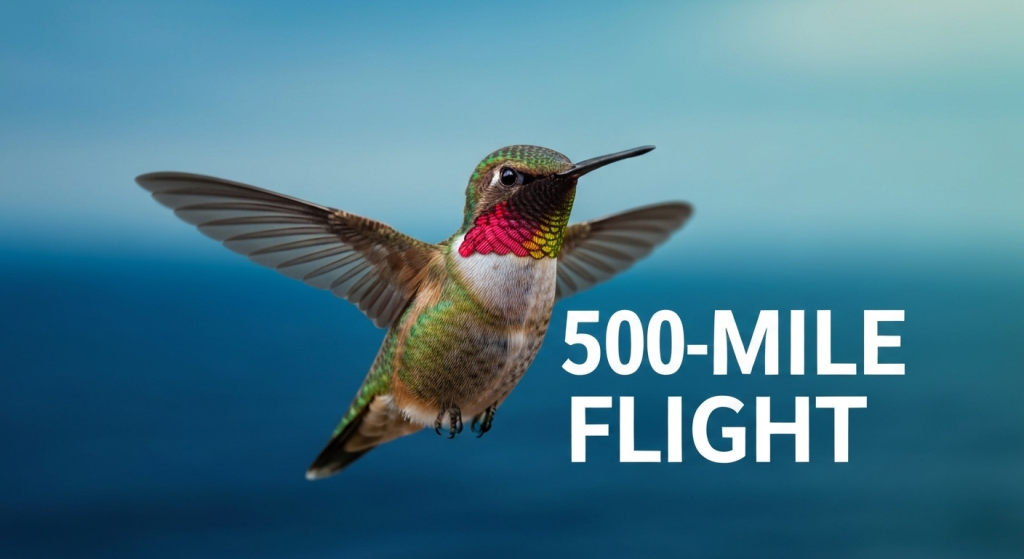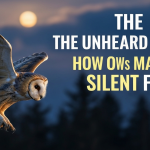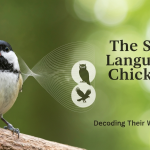The feat of how hummingbirds navigate during 500-mile ocean crossings is one of nature’s most stunning spectacles. Imagine a creature that weighs less than a nickel, with a heart the size of a pea, flying non-stop for nearly a full day over a vast, unforgiving expanse of open water. The Ruby-throated Hummingbird’s migration across the Gulf of Mexico is a journey of incredible endurance, precise navigation, and high-stakes survival. It challenges our understanding of what’s possible for such a tiny animal. This isn’t just a simple flight; it’s a meticulously prepared marathon that relies on a perfect symphony of biological adaptations, internal navigation systems, and an instinct honed over millennia.
For years, my work has centered on understanding and explaining the complexities of the avian world. Mahnoor Farooq has been exploring and writing about Bird Species for years, bringing research, cultural context, and clear explanations to readers. My fascination began not in a lab, but in my own backyard, watching these tiny dynamos hover at a feeder. This curiosity led me down a path of observing their seasonal patterns, which sparked a deeper dive into the science behind their epic journeys. The more I learned, the more I realized that sharing this knowledge is crucial. It transforms how we see these birds—from simple garden visitors to some of the most sophisticated long-distance athletes on the planet.
The Ultimate Athlete: Preparing for the Trans-Gulf Flight
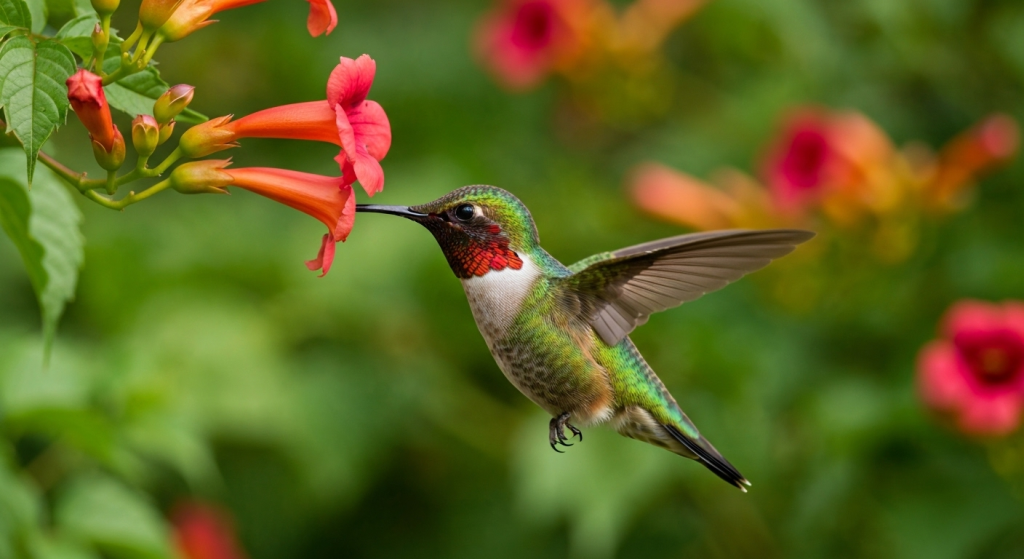
A hummingbird cannot simply decide to fly 500 miles on a whim. This journey requires weeks of intense preparation, transforming its tiny body into a marvel of fuel efficiency and endurance. The entire process is a masterclass in biological optimization, starting with an insatiable appetite.
Doubling Down: The Science of Hyperphagia
Before their migration, hummingbirds enter a state called hyperphagia. This is a biological trigger that tells them to eat far more than their usual daily requirement. While they typically consume about half their body weight in nectar each day, during this pre-migration phase, they can consume several times that amount. I’ve observed this firsthand at late-summer feeders; the activity becomes frantic, with birds feeding almost constantly from dawn until dusk.
This isn’t just about feeling full. It’s a strategic process of converting sugar from nectar into fat, the high-energy fuel they need for the journey. Within two to four weeks, a Ruby-throated Hummingbird can go from a lean 2.5 grams to a robust 5 grams or more. They effectively double their body weight, with the vast majority of that gain being pure fat. This fat is stored in specific deposits under the skin and around internal organs, serving as their sole energy source for the ocean crossing.
The Fuel Source: High-Efficiency Fat Metabolism
Why fat? Ounce for ounce, fat provides more than twice the energy of carbohydrates or protein. This makes it the most efficient fuel for a long-distance flight where every fraction of a gram matters. A hummingbird’s metabolism, already the fastest among vertebrates, becomes even more specialized during migration. They can burn these fat stores with incredible efficiency, powering their rapid wing beats—up to 70 times per second—for hours on end.
Think of it like this: a car equipped with a standard fuel tank (carbohydrates) can only travel so far. The hummingbird, through hyperphagia, essentially installs a massive, high-efficiency fuel tank (fat) that allows it to complete a journey that would otherwise be impossible. This metabolic engine is so finely tuned that it allows them to sustain the flight across the entire Gulf of Mexico.
Hummingbird Pre-Migration Transformation
| Feature | Typical State | Pre-Migration State | Purpose |
| Body Weight | 2.5 – 3.5 grams | 5.0 – 6.0 grams | Increase fuel reserves |
| Body Fat % | ~10% | 40% – 50% | Maximize long-burning energy |
| Feeding Behavior | Intermittent feeding | Near-constant feeding (Hyperphagia) | Rapidly build fat stores |
| Primary Fuel | Simple sugars (nectar) | Stored fat deposits | High-density, long-duration energy |
Navigating the Open Ocean: The Hummingbird’s Internal GPS
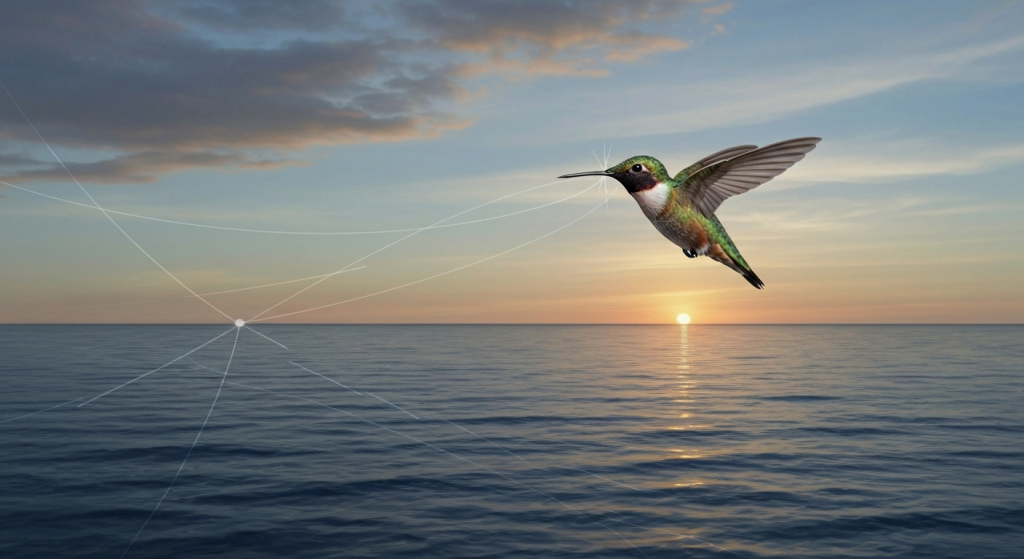
Once a hummingbird is fueled up, it faces its next great challenge: navigation. Flying over hundreds of miles of featureless water means there are no landmarks like rivers, mountains, or forests to guide the way. To overcome this, hummingbirds rely on a sophisticated, built-in navigation system that scientists are still working to fully understand.
Following the Sun: The Solar Compass
One of the primary tools in a hummingbird’s navigational toolkit is a sun compass. Like many migratory birds, they can determine direction by tracking the position of the sun in the sky. This is more complex than it sounds, as the sun’s position changes throughout the day. To use it accurately, the bird must also have a precise internal clock, known as a circadian rhythm.
By combining the sun’s position with their internal time-of-day knowledge, they can maintain a consistent southerly bearing. This method works well on clear days. But what happens when clouds obscure the sun? For a long time, this was a major puzzle. It turns out, hummingbirds have a backup system that is even more remarkable.
Feeling the Force: Magnetoreception Explained
The most fascinating navigational sense these birds possess is magnetoreception—the ability to perceive the Earth’s magnetic field. This essentially gives them a biological compass. While we can’t see or feel it, the planet is surrounded by a magnetic field with lines of force that run from the North to the South Pole. Migratory birds can detect this field.
The leading theory behind this sense involves a protein called cryptochrome, which is found in the birds’ retinas. When this protein absorbs blue light, it undergoes a quantum reaction that is sensitive to the direction of magnetic fields. This may allow hummingbirds to literally see the magnetic field as a pattern of light or shadow superimposed on their normal vision. This provides them with a reliable directional guide, day or night, rain or shine. Through my research, I’ve come to appreciate that this sense isn’t just a backup; it’s a fundamental part of how they experience the world, giving them a map that is invisible to us.
An Innate Map or a Learned Route?
A lingering question is whether this incredible navigational ability is purely instinctual or if it involves learning. Research suggests it’s a bit of both. The general direction and the ability to use the sun and magnetic fields are innate—hardwired into their genetics. However, younger birds may refine their routes by following more experienced adults on their first migration. This blend of instinct and learned experience ensures that the majority of birds successfully navigate the perilous journey year after year.
The Gulf Crossing: A Non-Stop 20-Hour Marathon
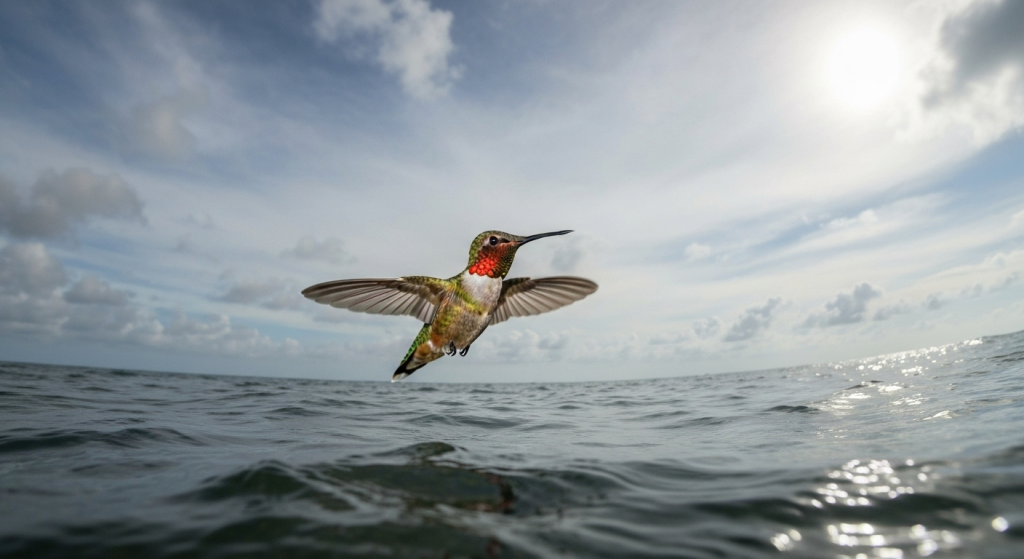
With fuel tanks full and internal compasses set, the hummingbird is ready for the most dangerous leg of its migration. The flight across the Gulf of Mexico is a non-stop, 500-mile journey that will push its body to the absolute limit.
Picking the Perfect Weather Window
One of the most critical decisions a hummingbird makes is when to begin its ocean crossing. A strong headwind can deplete its energy reserves too quickly, dooming the journey. Conversely, a favorable tailwind can provide a significant boost, reducing flight time and energy consumption. From my own observations on the Gulf Coast, you can see the birds gather for days, waiting. They become restless, feeding but seemingly waiting for a sign.
This “sign” is the weather. Hummingbirds are excellent meteorologists. They can sense changes in barometric pressure and wind direction. They will typically wait for a cold front to pass, which brings favorable north-to-northwesterly winds that will help push them south across the Gulf. Choosing the right moment to depart is a life-or-death decision.
The Point of No Return
Once they launch from the coasts of Louisiana or Florida, there is no turning back. For the next 18 to 22 hours, they will fly continuously. There is nowhere to land, nowhere to rest, and nothing to eat or drink. They fly at a relatively low altitude, just above the waves, to conserve energy. This part of the journey is a testament to their sheer endurance. They must maintain their rapid wing beats for the entire duration, a feat of physical exertion that is almost unimaginable for an animal so small.
Pushing the Limits: Physiological Stresses
The physical toll of the flight is immense. By the time they reach the Yucatán Peninsula in Mexico, they have burned through virtually all of their fat reserves. Many arrive severely dehydrated and exhausted, having lost nearly half their body weight. Their first priority upon making landfall is to find a source of nectar to begin the process of refueling before they continue their journey further south into Central America.
Challenges of Ocean vs. Land Migration
| Challenge Factor | Ocean Crossing (Gulf of Mexico) | Overland Migration |
| Resting Opportunities | None for 18-22 hours | Numerous (trees, shrubs) |
| Refueling | Impossible | Frequent access to nectar |
| Primary Risk | Exhaustion, dehydration, storms | Land-based predators, habitat loss |
| Navigational Cues | Sun, magnetic field, star patterns | Landmarks, rivers, coastlines |
| Duration | A single, non-stop marathon flight | A series of shorter daily flights |
Why Take Such a Risky Route?
Given the extreme dangers of crossing the Gulf of Mexico, why don’t all hummingbirds just take the safer, longer route around the coast? Many do, but the direct ocean crossing offers a significant advantage that makes the gamble worthwhile for millions of these birds.
The Evolutionary Gamble: Pros and Cons
The answer comes down to a simple trade-off: time and energy. Flying directly across the Gulf is a 500-mile trip. The overland route, which follows the curve of the coast through Texas and Mexico, is more than twice that distance.
While the coastal route offers plentiful food and resting spots, it also exposes the birds to more predators and takes much longer to complete. The direct trans-gulf flight, though perilous, is a massive shortcut. For the birds that are strong enough to make it, it saves precious time and allows them to reach their wintering grounds faster, securing the best territories and resources. It is a classic example of an evolutionary strategy where high risk is balanced by high reward.
The Gulf Shortcut vs. The Coastal Detour
| Aspect | Trans-Gulf Crossing | Coastal Land Route |
| Distance | ~500 miles | ~1,300 miles |
| Estimated Time | 18-22 hours (non-stop) | 2-3 weeks (in stages) |
| Energy Strategy | Burn all stored fat in one flight | Refuel and rest daily |
| Primary Danger | Storms, exhaustion over water | Predators, habitat fragmentation |
| Key Advantage | Fastest route to wintering grounds | Safer with more resources |
The Impact of Climate Change
This delicate migratory pattern is now facing new threats. Climate change is causing more frequent and intense hurricanes in the Gulf during the peak of fall migration. It is also shifting the timing of flower blooms along their routes. If hummingbirds arrive at a stopover point too early or too late, the nectar sources they depend on may not be available. This mismatch could have devastating consequences for a bird that arrives with zero energy reserves left.
Frequently Asked Questions (FAQs)
How long does it take a hummingbird to cross the Gulf of Mexico?
It takes a Ruby-throated Hummingbird approximately 18 to 22 hours of non-stop flight to cross the 500-mile expanse of the Gulf of Mexico, depending on wind conditions.
Do all hummingbirds migrate across the ocean?
No. While millions of Ruby-throated Hummingbirds make the trans-gulf journey, many others, along with different hummingbird species, follow a safer overland route along the coast of Texas and Mexico.
What do they do if they encounter a storm?
Unfortunately, a hummingbird caught in a severe storm over open water has very little chance of survival. This is why they are so careful about selecting a clear weather window before they begin their journey.
How much weight do they lose during the flight?
A hummingbird loses almost half its body weight during the crossing. It will burn through nearly all of the fat reserves it spent weeks building up, arriving on the other side in a state of extreme exhaustion.
Conclusion
The migration of the Ruby-throated Hummingbird is a powerful reminder of the resilience and complexity of the natural world. This tiny bird’s ability to double its weight, navigate using invisible magnetic fields, and fly for nearly a day without stopping is nothing short of miraculous. It’s a journey that combines the endurance of a marathon runner with the navigational precision of a modern aircraft. As we continue to study these incredible creatures, we gain a deeper appreciation for the delicate biological systems that make such a feat possible and the urgent need to protect the habitats they rely on at every stage of their epic annual journey.
